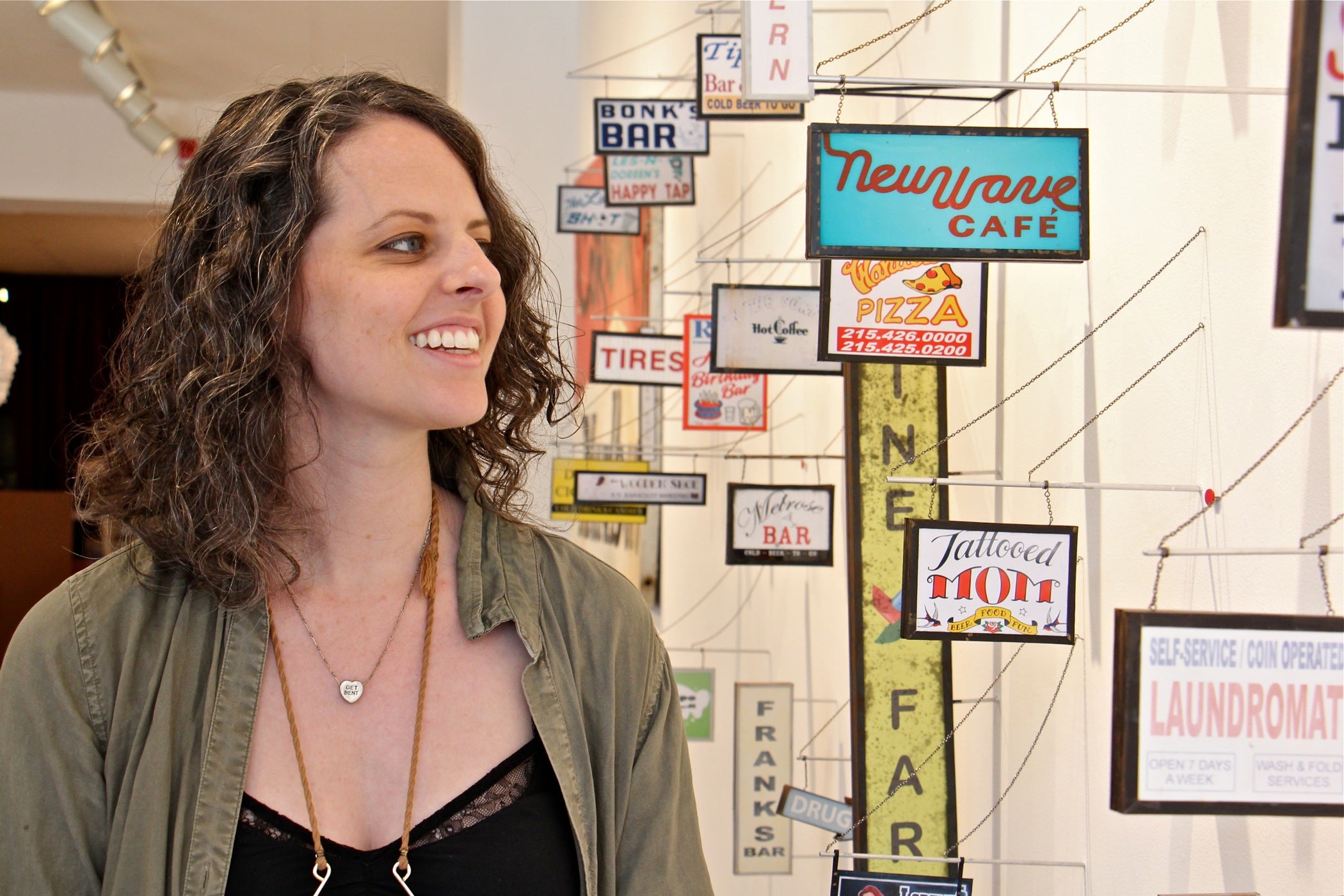Cornbread, the first graffiti artist, shows new work at Philadelphia gallery
Cornbread first started writing his name on walls while in juvenile detention. A half-century later, his iconic name is in simultaneous exhibitions, Philly and NYC.
Listen 1:46
Darryl McCray, who under the name "Cornbread" became a Philadelphia graffiti legend, has a show at the Paradigm Gallery in South Philadelphia. (Emma Lee/WHYY)
Cornbread, the Southern delicacy, goes stale fast.
But Cornbread, the graffiti artist, has managed to stay fresh for over 50 years.
In 1965, when Darryl McCray was a kid in Brewerytown, he was sent to juvenile detention for two years. While inside, he sought out the cafeteria cook to complain that the traditional quickbread had gone dry. The cook told him to scram.
McCray went back again and again, asking for fresh cornbread until the cook grabbed him by the shirt and dragged him out of the kitchen.
“He took me out to the cafeteria, to my counselor, Mr. Love. He said, ‘Mr. Love, keep this cornbread out of my kitchen,’ and threw me on the floor,” McCray recalled. “People started laughing at me and calling me ‘Cornbread.’ I didn’t mind them calling me Cornbread. I wrote Cornbread on the back of my shirt.”
McCray wrote his new nickname on everything: bus stops, street signs, benches, even on the side of an elephant at the Philadelphia Zoo. In the decades since, the kid from North Philly has become recognized as the first tagger to consistently write his name in public spaces — the progenitor graffiti artist.
McCray started tagging before the explosion of hip-hop. At the time, he was arrested as a vandal. Later, he became known as a wall writer.
“Today, I’m a street artist,” he said.
The artistry of Cornbread exists almost entirely in his name, made extraordinary for the lengths he would go to make it seen. He once tagged the private jet on which the Jackson 5 arrived in Philadelphia. He wrote on the plane while it was still on the tarmac.
McCray said that once, while he was being held overnight at a police station for vandalism, officers asked him for his autograph.
Now his work is on display at an art gallery in Philadelphia’s Queen Village neighborhood. Paradigm Gallery gave McCray damaged and salvaged street signs, hazard signs, and a large, metal Marlboro cigarette advertisement. He tagged them with his iconic name.
“My handwriting has not changed,” McCray said.
Curator Sara McCorriston hung Cornbread’s pieces alongside work by younger artists who work with signage: miniaturist Drew Leshko, painter Marissa Cianciulli, and street prankster Kid Hazo.

The show is called, not surprisingly, “Signs.”
“There’s so many more people appreciating the roots of hip-hop and graffiti right now, and there’s so many more people appreciating the roots of traditional sign painting, and people really keeping it alive,” McCorriston said.
McCray’s work is also featured right now in Brooklyn, in a larger exhibition about the history of graffiti called “Beyond the Streets.”
“Signs” is on view at Paradigm until the end of August.

WHYY is your source for fact-based, in-depth journalism and information. As a nonprofit organization, we rely on financial support from readers like you. Please give today.





